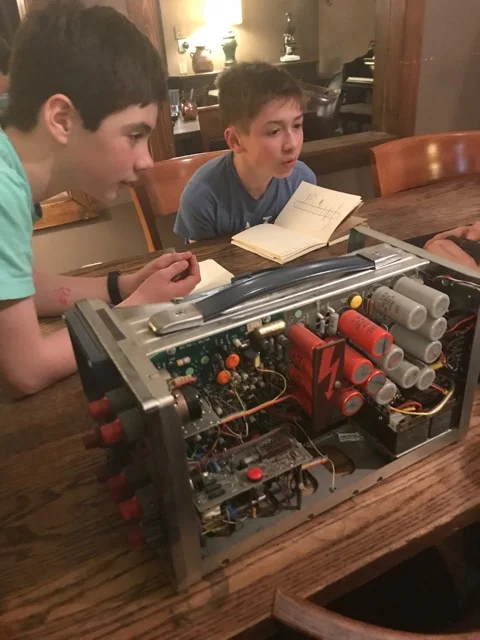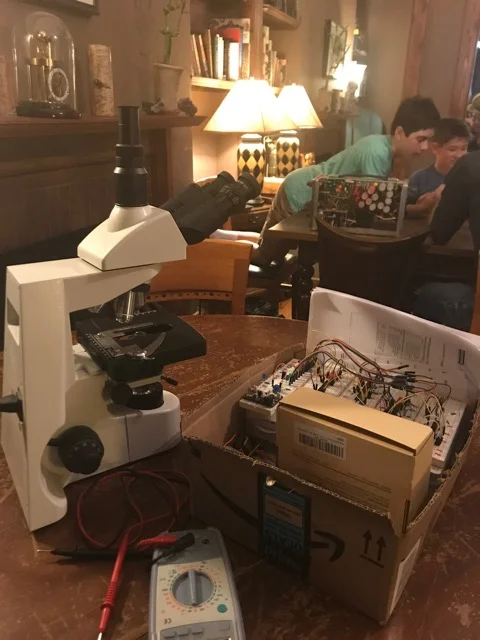Tearing it down reveals how the simple forms the complex
The focus of today's session was to show how complex machines and devices are formed from ever smaller modules: connected printed circuit boards (PCB) and integrated circuits (IC) all the way down to the lowly transistors and resistors.
A single transistor on a chip printout
We all know the words around electricity, "charge," "positive," "battery", and more. But where do they come from and what do they really mean? Let the history of these words illuminate the physics of electric phenomena. Lesson by James Sheils, animation by TED-Ed. Click or Tap to view the full lesson
Beyond even the smallest component level lies the material science and physics that underlies and ties our universe together. We got inquisitively messy by taking apart an old laptop and found that the mother board PCB is actually connected to a dozen other small submodule PCBs each dedicated to a single task: one to read touchpad input, another to receive connections from the hard drive or CD drive (and the hard drive/CD drives themselves!), one for all special hotkeys, power button and speakers, etc, all connected by beautiful ribbon cables like information highways. We found and popped out the CPU and saw that it was in fact just a big IC. We had a blast.
Before diving in class opened with a history of the origin of the word we use to talk about electricity which gave context as to why for example we conventionally say electricity flows from positive to negative (electrons -actually- move from negative to positive). Following the trend of past classes where we learn about fundamentals of for a specific component works, we also watched a video on batteries.
Click or tap here to view full lesson: Batteries are a triumph of science-they allow smartphones and other technologies to exist without anchoring us to an infernal tangle of power cables. Yet even the best batteries will diminish daily, slowly losing capacity until they finally die.





